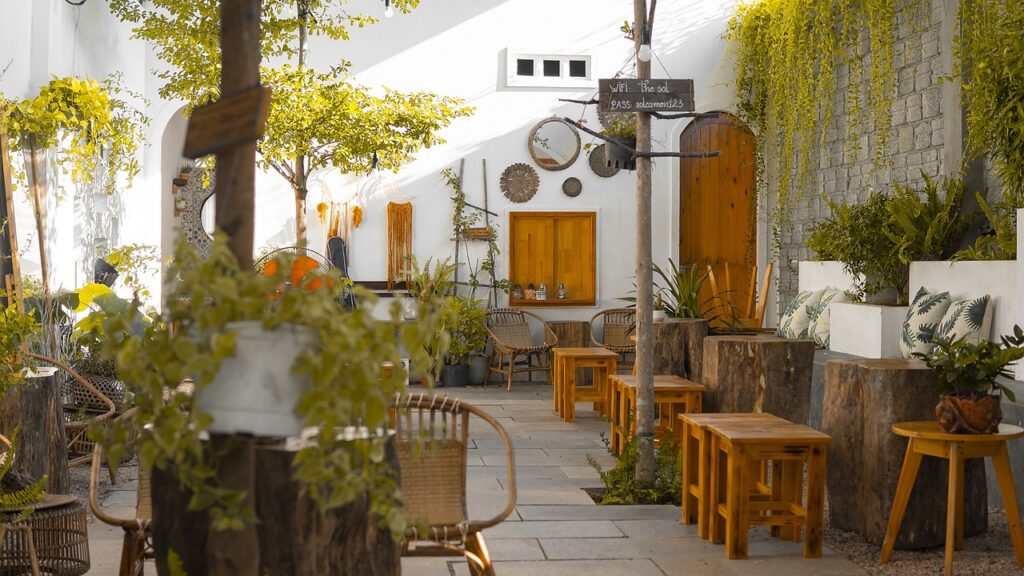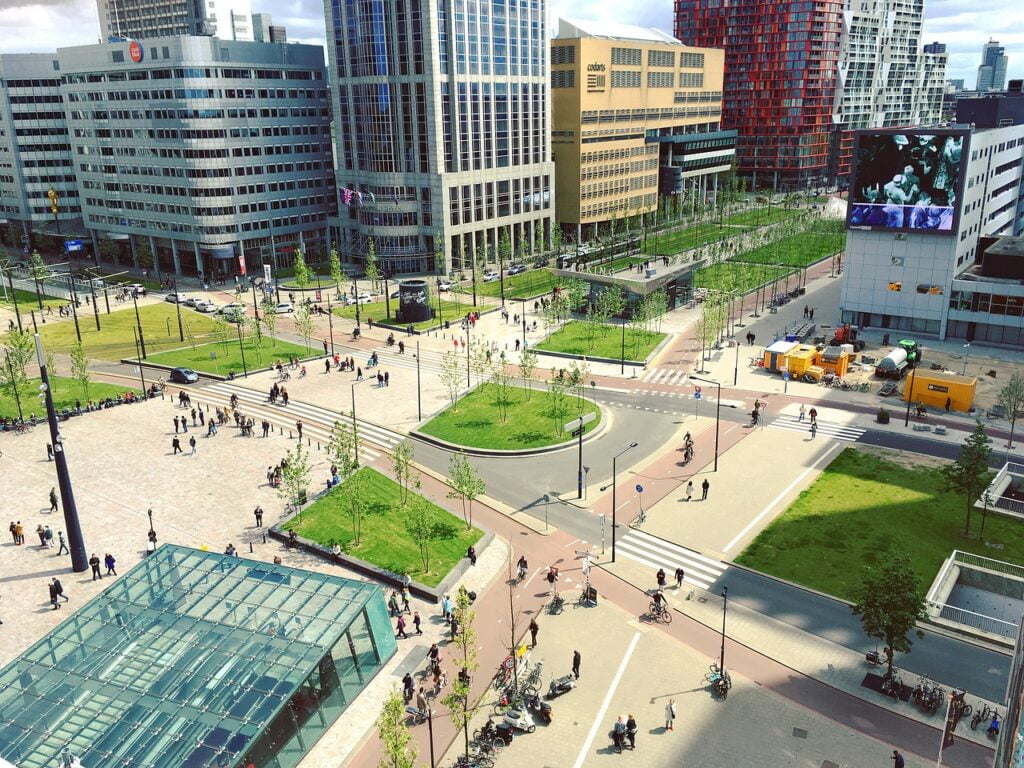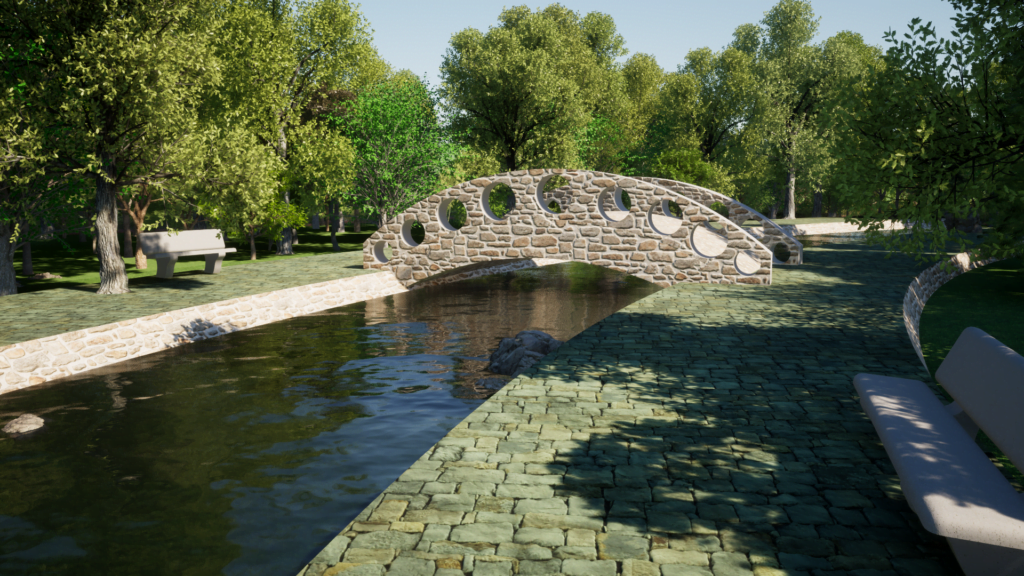Urban Front
beautify your home with professional landscaping
Let your surroundings be a canvas where the colors of serenity and the textures of tranquility paint the masterpiece of your outdoor sanctuary. Landscaping: where nature meets design, and every corner is an invitation to serenity.
Landscaping is the practice of designing and maintaining the outdoor environment surrounding a home or building. This includes the plants, trees, flowers, and other elements that make up the exterior of a property. Importance of landscaping are many as it can serve both functional and aesthetic purposes and is an important part of home ownership and maintenance.
Firstly, landscaping can greatly enhance the aesthetic appeal of a home. A well-designed landscape can make a property stand out and create a positive first impression for visitors or potential buyers.



Landscaping can greatly enhance the aesthetic appeal of a home in following ways:
first impression
The exterior of your home is the first thing people see when they visit your property. A well-designed landscape can create a positive first impression and set the tone for the rest of the property.
color and texture
Color and texture: The right mix of plants, flowers, and shrubs can create a colorful and textured landscape that adds depth and character to your home’s exterior. Different plants have different textures and colors, which can be combined to create a visually interesting landscape.
balance and symmetry
Landscaping can create a sense of balance and symmetry, which is visually pleasing to the eye. This can be achieved through the strategic placement of plants, trees, and other landscape elements.
focal points
Landscaping can create focal points that draw the eye and add visual interest. For example, a garden bed with brightly colored flowers or a strategically placed statue or water feature can become a focal point in the landscape.
curb appeal
A well-landscaped exterior can increase the curb appeal of your home, making it more attractive to potential buyers. This can translate to higher property value and a faster sale if you decide to put your home on the market.
environmental footprint
In addition to aesthetics, landscaping also has environmental benefits. For example, it can help reduce erosion and runoff, provide natural habitats for birds, and help filter pollutants from the air and water. Green spaces can also help improve mental health and reduce stress, and can encourage physical activity and outdoor recreation.
- Green space
- Mood enhancement
- Stress reduction
- Cognitive restoration
- Social support
- Physical activity

energy efficient home through landscaping
Landscaping can also contribute to energy efficiency in the home. Strategically placed trees and plants can provide natural shade and windbreaks, which can help reduce heating and cooling costs. This not only benefits the homeowner but also helps reduce energy consumption and the associated carbon footprint. Landscaping can contribute to energy efficiency in following ways:
Shade
Strategically planted trees and shrubs can provide shade for the home, reducing the amount of direct sunlight that enters the home. This can help keep the home cooler during hot summer months, reducing the need for air conditioning and lowering energy consumption.
windbreaks
Trees and shrubs can also be used to create windbreaks, which can help reduce the amount of cold air that enters the home during the winter. This can help keep the home warmer, reducing the need for heating and lowering energy consumption.
Evapotranspiration
Plants and trees can release moisture through a process called evapotranspiration, which can help cool the surrounding air. This can help reduce the temperature of the air around the home, reducing the need for air conditioning and lowering energy consumption.
insulation
Landscaping can be used to provide insulation for the home. For example, planting shrubs or vines on a trellis against a wall can create a layer of insulation, helping to keep the home warmer during the winter and cooler during the summer.
solar panels
Landscaping can be used to support the installation of solar panels, which can help offset energy consumption and reduce utility costs.


flowers and trees
A well-landscaped yard can become an extension of the home, providing an additional living space for spending time with family and friends.
The type of flowers and trees that are best for landscaping depends on several factors, including the climate, soil conditions, and personal preferences. Here are some popular options for flowers and trees in landscaping:
Flowers
Roses, Lilies, Hydrangeas, Sunflowers, Daffodils, and more
Trees
Maple, Oak, Dogwood, Cherry, Magnolia, and more
When choosing flowers and trees for landscaping, it’s important to consider factors such as the amount of sunlight the area receives, the soil type, and the maintenance requirements of the plants. Consulting with a local gardening or landscaping professional can help ensure that you choose the right plants for your specific needs and preferences.
The amount of area that should be dedicated to landscaping around a house can vary depending on a number of factors, including personal preferences, the overall design of the home and property, and local zoning regulations. As a general guideline, a common rule of thumb is to dedicate about 10-15% of the overall property area to landscaping. Assuming your house is on a 200 square yard (approximately 167 square meter) lot, a 10-15% allocation for landscaping would translate to 20-30 square yards (approximately 17-25 square meters) of space for landscaping. This could include a mix of garden beds, shrubs, trees, and other features such as walkways or water features.

size of the house
Space planning
It is true that when given the opportunity and space, many people will build their homes as large as possible or allowed. However, building larger homes can have several negative consequences, including reduced energy efficiency, higher heating and cooling costs, and increased environmental impact.
Larger homes, while offering spacious living, often present challenges in energy efficiency due to increased heating and cooling demands. The elevated air volume and greater number of windows and doors contribute to higher energy consumption and environmental impact. However, there are strategies to counteract these effects. Incorporating energy-efficient features such as high-efficiency windows, insulation, and solar panels can mitigate energy consumption and utility costs. Additionally, utilizing environmentally-friendly materials and construction practices helps offset the environmental footprint of larger homes. Conversely, embracing the benefits of smaller homes, which are more affordable, require fewer resources, and foster a sense of community, encourages a more sustainable and fulfilling lifestyle.
In conclusion, landscaping plays a pivotal role in home ownership, offering both functional and aesthetic advantages that significantly elevate the homeowner’s quality of life. Beyond enhancing property value, landscaping contributes to energy efficiency, providing spaces for relaxation and entertainment. This investment in the outdoor environment not only benefits the present but also paves the way for a more sustainable and enjoyable future.